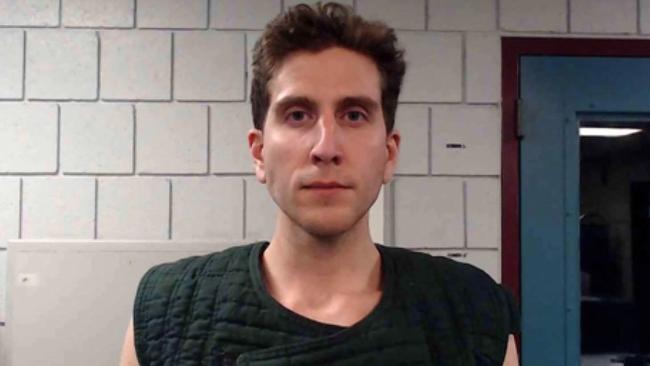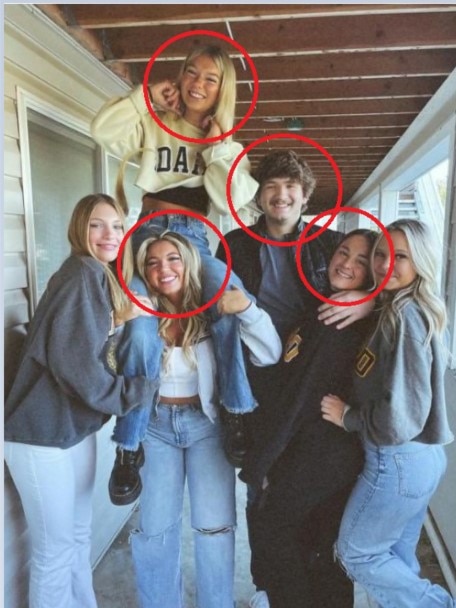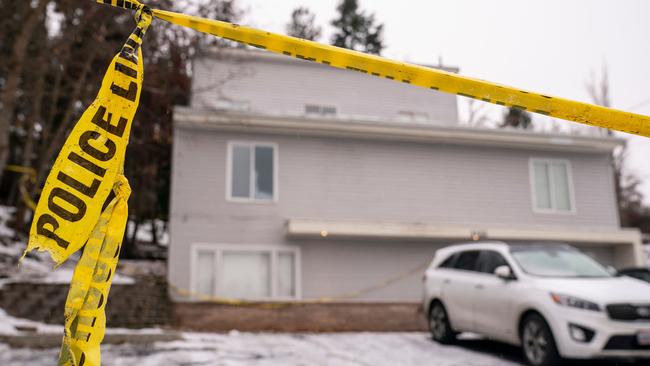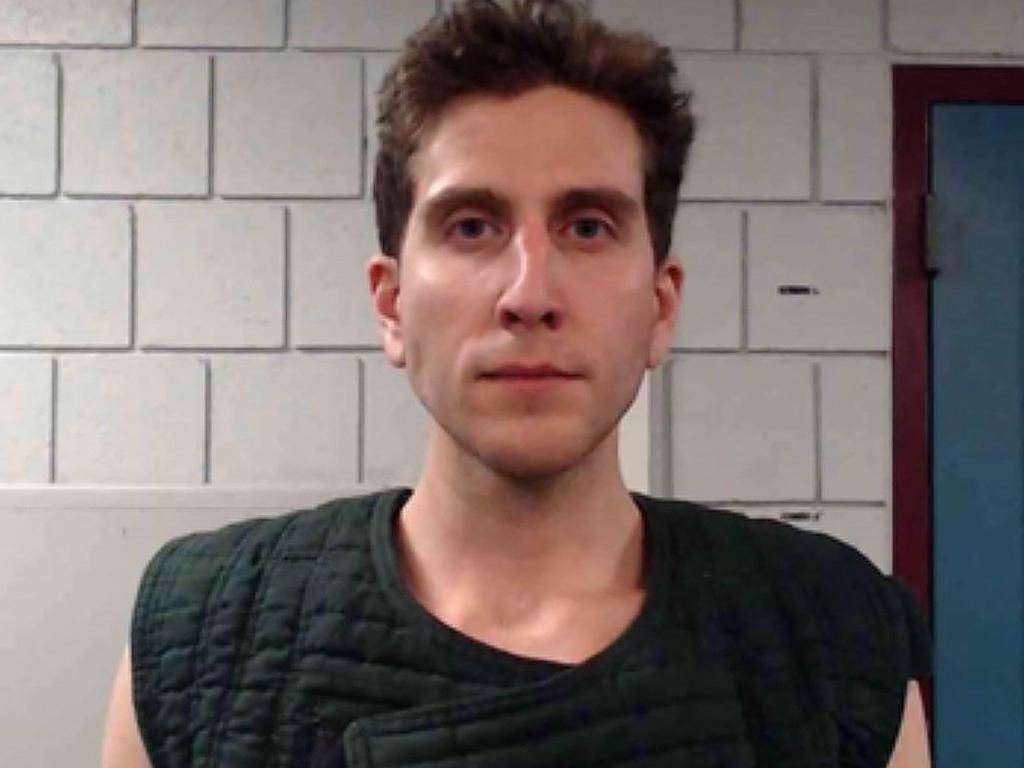
Early in the New Year, the presiding magistrate placed a gag order on ‘players’ in the trial process – prosecutors, law enforcement, the defence and the parents of the victims are restrained from speaking to the media about the case.
In the vacuum, true crime boffins, commentators and a raft of experts have appeared on media speculating on the suspect’s motives, much of it of the gamekeeper turned poacher type, and how his academic background provided a working knowledge of crime scene investigations and police methods in evidence gathering.
Last month, media digging revealed the alleged offender had sought an internship with a neighbouring police department, claiming he wanted to assist “rural law enforcement agencies with how to better collect and analyse technological data in public safety operations”.
It’s an intriguing case and every day brings new snippets of information, some relevant, some merely curious and often macabre. It also brings into question the role of media and social media. Amid the chatter, the presumption of innocence has often been roughly ignored. While those close to the victims are restrained from comment, the media has been left to ruminate out loud.
At the heart of is the sorrow of four inexplicably violent murders that has put the college town of Moscow, the home of Idaho State University, and its 25,000 residents in deep shock in the rolling hills of northern Idaho.
Here’s what we know.
Just after 4.00am on November 13, 2022, an intruder entered a six-bedroom, three storey rented house in Moscow, where six student tenants lay sleeping. The intruder stabbed four of the students to death.
Hearing cries and a male voice reply, “It’s okay. I am going to help you,” one of the two survivors opened her bedroom door and saw a masked man whom she later described only as having “bushy eyebrows.” Panicked, she closed her bedroom door. Shortly afterwards, the intruder then calmly left the house through a sliding door at the rear of the property.
The two survivors were distraught. One fainted. A 911 call was made but the caller was in deep shock and fell into incoherence. The dispatch caller sent police to the property requesting they check on an “unconscious person”.
What police found were the bodies of Kaylee Goncalves and Madison Mogen, both 21, and Xana Kernodle, 20, and her boyfriend Ethan Chapin, also 20, all viciously murdered, stabbed to death. They were all students at Idaho State.

Later, experienced investigators described the scene inside the house as the worst they had seen.
For more than six weeks, Moscow Police Chief James Fry kept his cards close to his chest. Media appearances were brief and perfunctory and added little to the mystery. Parents and friends of the victims spoke to the media expressing their frustration at the apparent lack of progress in the investigation.
Amateur online investigators filled the void of information and friends, and family members routinely became suspects in vapid online discourse.
On December 7, Fry announced that police were searching for a white Hyundai Elantra. Limited CCTV footage available to investigators showed a vehicle matching that description park near the students’ home on the morning of the murders.
On December 30, a police tactical response group blasted through the doors of a home in Indian Mountain Lake in northeast Pennsylvania and arrested 28-year-old Bryan Kohberger.
Kohberger was a PhD student in criminology and a teacher’s assistant at Washington State University in Pullman, Washington, just 15 kilometres across the state border from Moscow. He waived extradition proceedings and was flown the 4000-kilometre journey back to Idaho where he was charged with four counts of first-degree murder and felony burglary.
Kohberger remains in custody in Latah County Jail.
Prosecutors’ affidavits revealed that Kohberger’s DNA had been found at the scene, on a knife sheath bearing a USMC logo which had been found in Madison Mogen’s bed by her right side. The sheaf is widely available and can be purchased at Walmart stores.
The murder weapon has not been found.

Mobile phone triangulation showed Kohberger, who resided 15 kilometres away on campus in Pullman WA, had been in the neighbourhood at least a dozen times prior to the murders, always late in the evening or early in the morning. The prosecutors’ affidavit states that at the time of the murders, Kohberger’s phone was switched off.
He drove a white 2016 Hyundai Elantra, the same make and model of vehicle found in CCTV footage around the students’ home.
In mid-December, Kohberger drove cross country with his father from Pullman to the family home in Indian Mountain Lake, PA. His father had flown to Pullman days before.
Kohberger was under surveillance at that time and was filmed placing material in bins on a property neighbouring his parents’ home on two occasions. Investigators have examined the contents of those bins but a further gag order means what has been found and what relevance it has to the case is known only to prosecutors.
In the absence of these critical details and so much more, the media has been obliged to look at Kohberger’s personal history in an attempt to glean some insight.
He was known to have suffered or may still be suffering from Visual Snow Syndrome or VSS, a disorder that causes sufferers to see static before their eyes. Some describe it as seeing the world through a badly tuned television. The condition is sometimes linked to tinnitus. There is no cure, and the syndrome may end abruptly or continue for life. Treatments include antipsychotic and anti-anxiety medications.
Kohberger left a string of bleak messages in a chat room designed to provide support for VSS sufferers more than a dozen years ago, all of which have since been removed. One message obtained on an archival search showed Kohberger or someone bearing his image as an icon with his date of birth reads:
“I have had this for over 2 years, and I have it bad in every single way. Not one night have I slept normal since and I feel like I am trapped here. I have been able to block it out for awhile now but I realise what is wrong and it suddenly becomes unbelievable. I am desensitised in every way now. People say these are supposed to be the years I enjoy and cherish, well I can’t say I will cherish these days.”
Kohberger was also a heroin user in his teens but had since been clean. He was a vegan. Journalists have questioned women Kohberger has dated and while one woman recalled some odd behaviour, there was no history of violence.
Despite his drug use, Kohberger had no police record and his only known interactions with police prior to the student murders was a call from several years ago where he was left stranded behind a locked gate of a national park. On that occasion, he was polite and apologised to the police for wasting their time.
Subsequent examination of cold case murders in and around areas where Kohberger has lived and studied shows nothing of interest. A prosecutor’s office in Pennsylvania where Kohberger studied as an undergraduate student was one that conducted a comprehensive review and found, “Nothing with respect to Kohberger has come about in our investigations of cold cases or unsolved cases to this point, but we always continue to investigate and pursue leads.”
During his period as an undergraduate student at DeSales University, Pennsylvania Kohberger conducted a research assignment asking criminals to complete a survey. The survey which remains online and was promoted again by Kohberger in a Reddit post in November, takes 15-20 minutes to complete and includes questions about how offenders have responded emotionally to illegally entering premises, committing crimes therein, how they felt at the scene and after leaving it.
It could be seen as mere academic data collection but in the face of the events on November 13, the questions can take on a bizarre alternative meaning.
Policing in Moscow, Idaho generally involves attending to noise complaints from student parties and the odd bit of property crime. To reinforce this, media reports have made much of the fact that the last murder in Moscow occurred seven years ago.
What is rarely mentioned is that the event was a triple murder spree shooting where John Lee, then 29, shot his landlord to death, entered an Arby’s restaurant and killed the manager in a hail of gunfire before driving to his adoptive parents’ home and shooting his adoptive mother dead.
Moscow, Idaho has not been spared its share of America’s epidemic of gun violence. Lee, who two separate psychiatric assessments claimed was suffering from untreated schizophrenia and acute autism spectrum disorder, was sentenced to life in prison in 2016.
In the case of the four murdered students, prosecutors will attempt to show means, opportunity and a forensic pathway from the murder scene back to Kohberger but the question of motive remains a mystery.
Prosecutors have yet to reveal any evidence that Kohberger knew his victims, although one of the victim’s parents has claimed there was some contact. Of course, that parent has been gagged from speaking further.
In recent days, one media outlet claimed Kohberger had been subject to multiple complaints from students, that he had “behavioural problems” and showed a “sexist attitude towards women”. On November 2, his supervising professor met with him to discuss an improvement plan. The matter came to a head a month later when Kohberger met with faculty leaders. He was formally dismissed on December 19, more than a month after the murders.
Kohberger has yet to enter a plea, although before the gag order, his defence counsel said the 28-year-old “looked forward to being exonerated”.
A preliminary hearing is due to begin on June 26.







A grisly multiple murder in an idyllic college town in the Idaho panhandle has drawn media attention from around the world. Much of the fascination stems from the identity of the alleged perpetrator, a PhD student in criminology who once created a survey asking convicted criminals how they felt after committing violent offences.